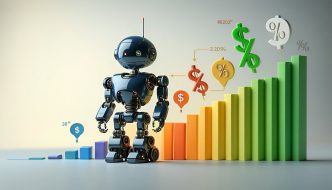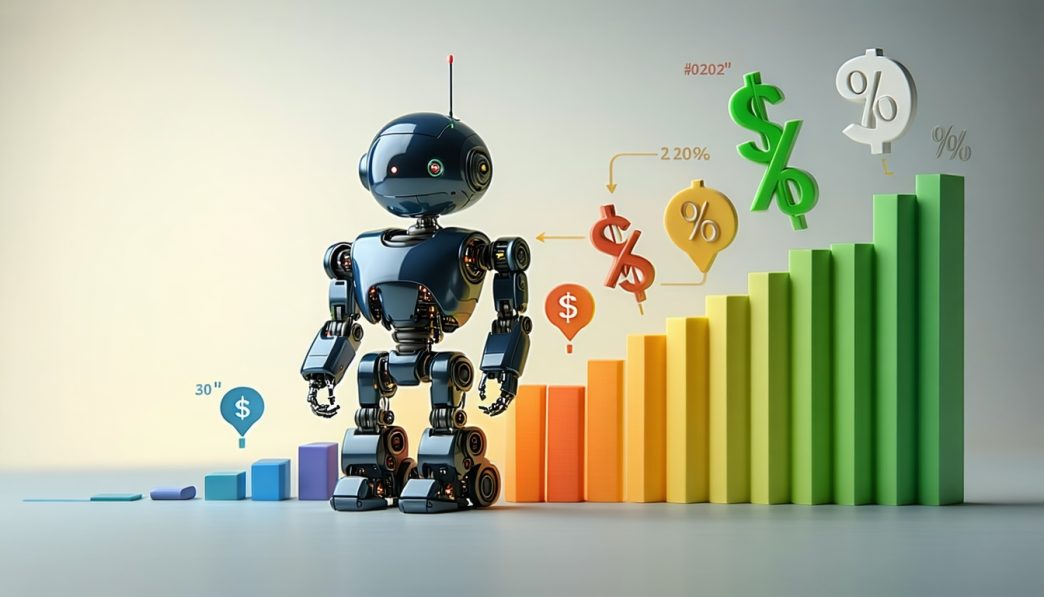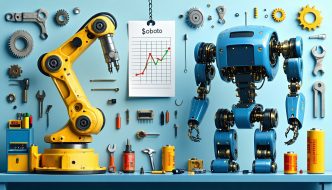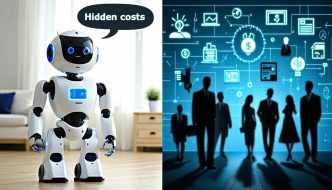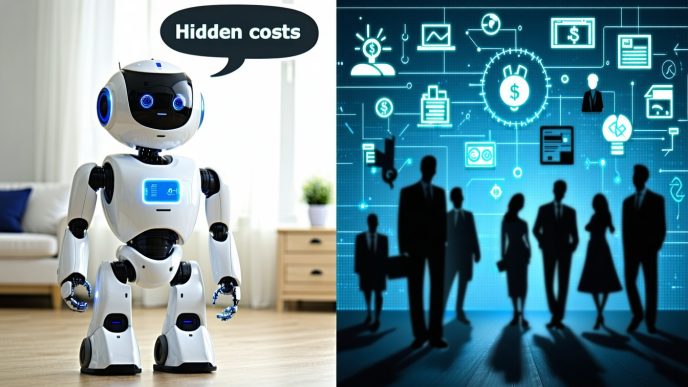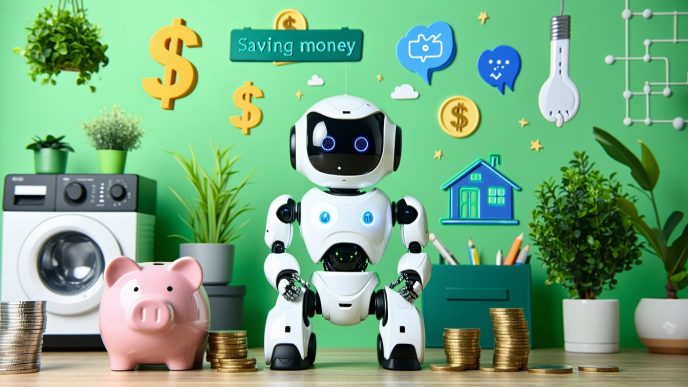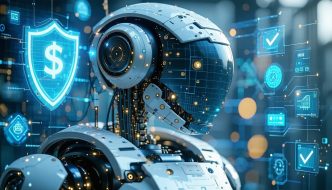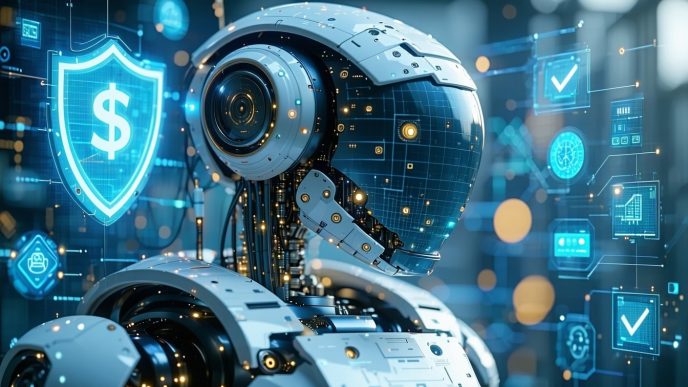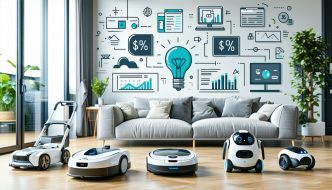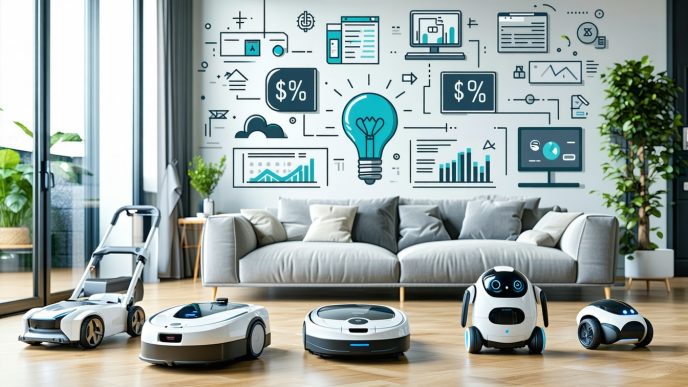Evaluating the True Cost of Robots
Understanding the true cost of robots involves looking beyond the initial purchase price. It is crucial to evaluate various factors that influence depreciation and how robots compare to other electronics over time.
Factors Influencing Robot Depreciation
Several elements contribute to the depreciation of robots over time. These factors may include:
- Technology Advancements: Rapid innovation can render older models less desirable.
- Usage Intensity: The more frequently a robot is used, the faster it may wear down, impacting its overall value.
- Maintenance: Regular upkeep may prolong the effective lifespan and value retention of a robot.
- Market Demand: Fluctuations in consumer interest and technological trends can influence the resale value.
- Brand Reputation: Established brands may maintain their value better than newer or less-known brands.
| Factor | Impact on Depreciation Rate |
|---|---|
| Technology Advancements | High |
| Usage Intensity | Medium |
| Maintenance | Low |
| Market Demand | Medium |
| Brand Reputation | High |
Comparing Robot Depreciation to Other Electronics
Robots can depreciate differently compared to traditional electronics such as computers, smartphones, and home appliances. Understanding these differences helps in evaluating the overall investment.
| Type of Electronic | Average Depreciation Rate (Yearly) | Expected Lifespan (Years) |
|---|---|---|
| Robots | 15-25% | 5-10 |
| Computers | 20-30% | 3-6 |
| Smartphones | 25-35% | 2-4 |
| Home Appliances | 10-15% | 8-15 |
Robots typically have a more gradual depreciation rate compared to smartphones and computers, reflecting their longer expected lifespan when properly maintained. First-time buyers should consider the depreciation of robots over time as part of the cost of ownership for home robots. Factors such as robot maintenance costs and potential robot software subscription fees should also be evaluated.
By examining the depreciation of robots in relation to other electronics, value-conscious shoppers can make informed decisions regarding their investments.
Understanding Depreciation
Evaluating the depreciation of robots over time involves understanding what depreciation is and the methods used to calculate it. This knowledge is essential for first-time buyers, value-conscious shoppers, and tech enthusiasts assessing the long-term cost of robot ownership.
Definition of Depreciation
Depreciation refers to the reduction in the value of an asset over time, typically due to wear and tear, age, or obsolescence. For robots, depreciation can occur more rapidly than for other electronic devices due to advancements in technology and changing market demands. Understanding depreciation helps individuals gauge how much value their investment will retain after a set period.
Methods of Calculating Depreciation
Several methods can be used to calculate the depreciation of robots. Here are three common methodologies:
-
Straight-Line Depreciation
This method spreads the cost of an asset evenly over its useful life. The formula is:[
\text{Annual Depreciation} = \frac{\text{Purchase Price} – \text{Salvage Value}}{\text{Useful Life}}
] -
Declining Balance Depreciation
This method allows for a higher depreciation expense in the early years. The formula is:[
\text{Annual Depreciation} = \text{Book Value at Beginning of Year} \times \text{Depreciation Rate}
] -
Units of Production Depreciation
This method calculates depreciation based on the asset’s usage. The formula is:[
\text{Depreciation Expense} = \left(\frac{\text{Total Cost} – \text{Salvage Value}}{\text{Total Estimated Units}}\right) \times \text{Units Produced in Period}
]
The method chosen can significantly influence the perceived value of a robot over time. Below is a table illustrating hypothetical depreciation values using different methods:
| Method | Initial Value | Useful Life (Years) | Annual Depreciation (Year 1) | Value at End of Year 1 |
|---|---|---|---|---|
| Straight-Line | $2,000 | 5 | $400 | $1,600 |
| Declining Balance (20%) | $2,000 | 5 | $400 | $1,600 |
| Units of Production (1000 units) | $2,000 | 5 | Varies based on usage | Varies |
Understanding these methods and how to apply them is crucial for effectively assessing the cost of ownership for home robots and making informed decisions in the robot market.
Depreciation Rates of Robots
Understanding how quickly robots lose value is essential for first-time buyers and value-conscious shoppers. This section discusses the typical lifespan of robots and the factors that affect their value over time.
Typical Lifespan of Robots
The lifespan of a robot can vary greatly depending on its type, usage, and maintenance practices. Generally, most consumer robots have a lifespan that ranges from three to seven years. This lifespan can be influenced by factors such as technological advancements, wear and tear, and obsolescence due to software updates.
| Type of Robot | Typical Lifespan |
|---|---|
| Vacuum Robots | 5-6 years |
| Lawn Mowing Robots | 5-7 years |
| Service Robots | 3-5 years |
| Educational Robots | 4-6 years |
Factors Affecting Robot Value Over Time
Several factors contribute to the depreciation of robots over time. Understanding these factors can help buyers make informed decisions regarding their investments.
Technological Advancements
Rapid advancements in technology can make older models less desirable. Upgrades in features, capabilities, and efficiency can lead consumers to prefer newer models over existing ones.
Wear and Tear
As robots are used, physical components can wear down, affecting their performance. Regular use can lead to a decline in usability, ultimately decreasing the robot’s resale value.
Software Updates
Some robots rely on software for enhanced functionality. Software updates may require newer hardware to perform optimally, leaving older models outdated.
Maintenance and Repairs
Proper maintenance can extend the life of robots, while neglect may lead to quicker depreciation. Expenses associated with robot maintenance costs and robot repair and part replacement expenses can significantly impact overall ownership costs.
Battery Performance
Batteries have a limited lifespan, and their performance can degrade over time. Knowing the battery replacement costs for robots is crucial for potential buyers considering long-term ownership.
Market Demand
The demand for specific robot types in the market can influence their resale value. A decline in interest for certain robots may accelerate depreciation.
By comprehending these elements, buyers can better evaluate the expected depreciation of robots over time and factor this into their overall cost of ownership for home robots. Many consumers are not only invested in the initial price but also in the long-term cost-effectiveness of their robotic companions.
Comparing Robot Depreciation to Other Electronics
In this section, the depreciation of robots is assessed in the context of other electronic devices. Understanding how robots lose value compared to traditional electronics is crucial for buyers considering the long-term investment.
Overview of Electronics Depreciation
Electronics generally experience rapid depreciation soon after purchase. Factors such as technological advancements, market competition, and wear and tear contribute to the depreciation rates of various electronic devices. The common depreciation rates for typical electronics can vary significantly depending on the type of device.
| Electronics Type | Typical Depreciation Rate (Year 1) | Typical Depreciation Rate (Year 2) | Typical Lifespan (Years) |
|---|---|---|---|
| Smartphones | 30% | 20% | 2-3 |
| Laptops | 25% | 15% | 3-5 |
| TVs | 20% | 10% | 5-7 |
| Robots | 20% | 15% | 5-10 |
Electronics like smartphones and laptops typically lose a large fraction of their value in the first year. Conversely, devices such as TVs tend to depreciate at a slower pace over a more extended period.
How Robots Compare to Other Electronics in Depreciation Rates
The depreciation of robots over time is relatively moderate when compared to other consumer electronics. While they typically depreciate around 20% in the first year, robotics technology tends to hold its value better than smartphones and laptops. Factors such as build quality, functionality, and the rapid evolution of technology determine how quickly a robot declines in value.
| Item | Year 1 Depreciation | Year 2 Depreciation | Year 3 Depreciation |
|---|---|---|---|
| Robots | 20% | 15% | 10% |
| Smartphones | 30% | 20% | 10% |
| Laptops | 25% | 15% | 10% |
| Smart Appliances | 15% | 10% | 5% |
The table illustrates that while robots have a significant upfront depreciation, they may retain more value compared to other electronics in subsequent years. Factors such as their specialized capabilities, potential for upgrades, and ongoing utility contribute to maintaining value.
This comparison of depreciation rates helps potential buyers weigh the costs associated with robots against other electronics. Understanding the depreciation of robots over time alongside factors such as cost of ownership for home robots can guide value-conscious decisions. Buyers should also be aware of additional costs that can influence their overall investment, including robot maintenance costs and robot software subscription fees.
Cost-Effective Strategies for Robot Ownership
Investing in robots can be a significant commitment, and understanding how to maximize their value over time is essential for first-time buyers and value-conscious shoppers. This section outlines effective strategies to ensure robot longevity, proper maintenance, and smart decision-making regarding repairs and upgrades.
Maximizing Robot Lifespan
Extending the lifespan of a robot not only enhances its value but also minimizes the overall cost of ownership. Implementing the following strategies can help achieve this goal:
- Regular Software Updates: Keeping the robot’s software up-to-date ensures optimal performance and security.
- Routine Inspections: Regular checks for wear and tear help identify issues before they lead to more significant problems.
- Proper Usage: Following the manufacturer’s guidelines for operation can prevent misuse and prolong the robot’s lifespan.
- Environmental Considerations: Using the robot in a suitable environment, free from extreme temperatures or excess moisture, can reduce wear over time.
Ensuring Proper Maintenance and Care
Proper maintenance significantly impacts the depreciation of robots over time. Adopting best practices can ensure efficient operation and extend the lifespan of the equipment. Key maintenance tasks include:
| Maintenance Task | Recommended Frequency |
|---|---|
| Clean sensors and brushes | Weekly |
| Check battery condition | Bi-monthly |
| Inspect moving parts | Monthly |
Investments in regular maintenance can lead to lower overall robot maintenance costs and minimize unexpected repairs down the line.
Additionally, keeping track of software subscription fees, such as those related to updates or added features, can help in managing costs. For more on this, refer to our article on robot software subscription fees.
Upgrading vs. Repairing: Making Informed Decisions
When considering whether to upgrade or repair a robot, understanding the potential costs associated with each option is crucial. The following table compares common costs related to repairs and upgrades:
| Action | Average Cost Estimate |
|---|---|
| Repair and part replacement | $100 – $500 per incident |
| Battery replacement | $50 – $150 per battery |
| Software upgrade | $20 – $100 |
| Extended warranty purchase | $75 – $300 annually |
When evaluating whether to repair or upgrade, consider factors such as the frequency of breakdowns, the age of the robot, and the potential for new features that an upgrade might offer. Understanding these aspects can inform better decision-making and help manage the hidden costs in robot ownership.
Ultimately, adopting a proactive approach to robot care through effective maintenance, strategic upgrades, and informed repairs can significantly influence the depreciation of robots over time, ensuring a more valuable investment for the user. For additional plans on cutting costs, explore our article on saving money on robot ownership.

